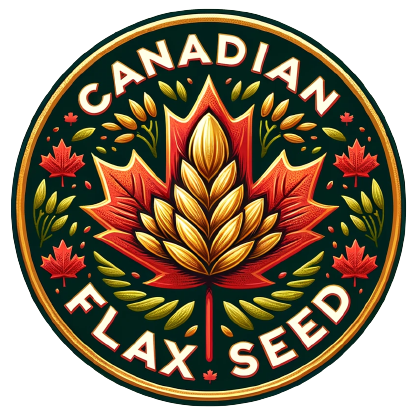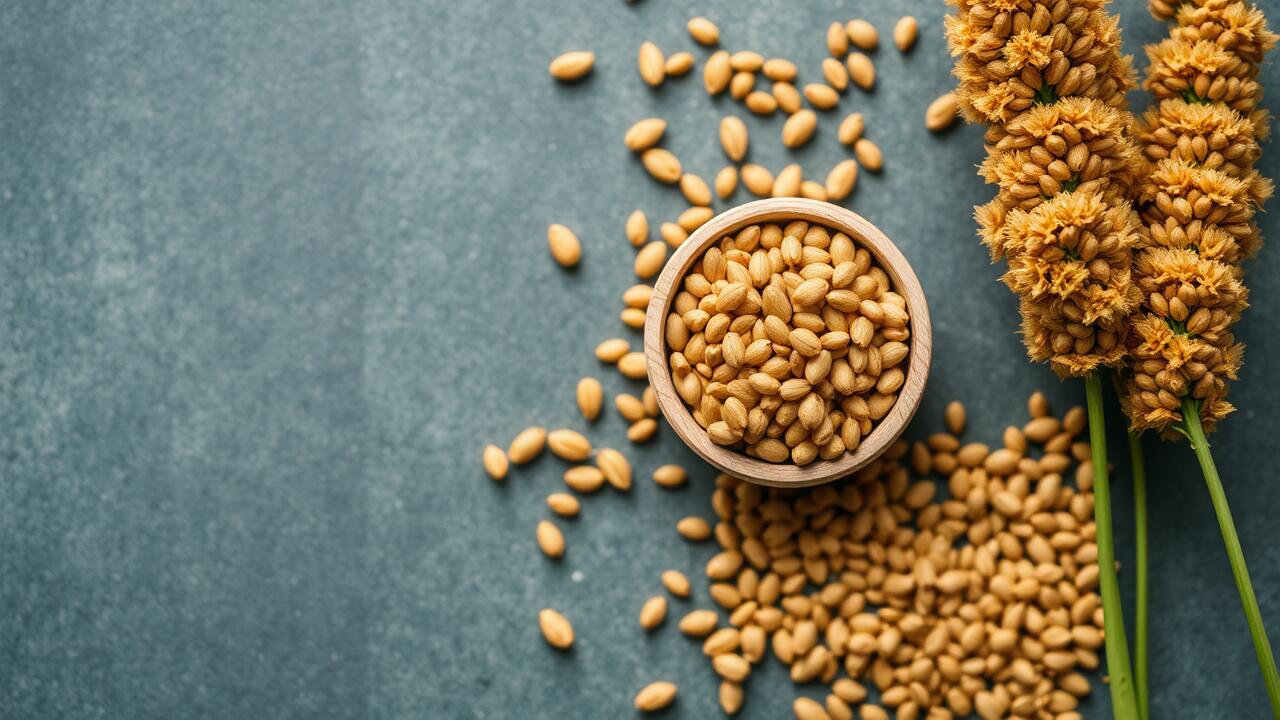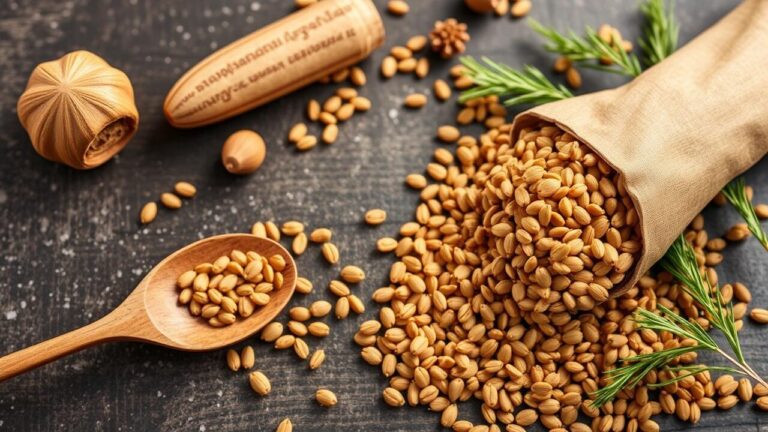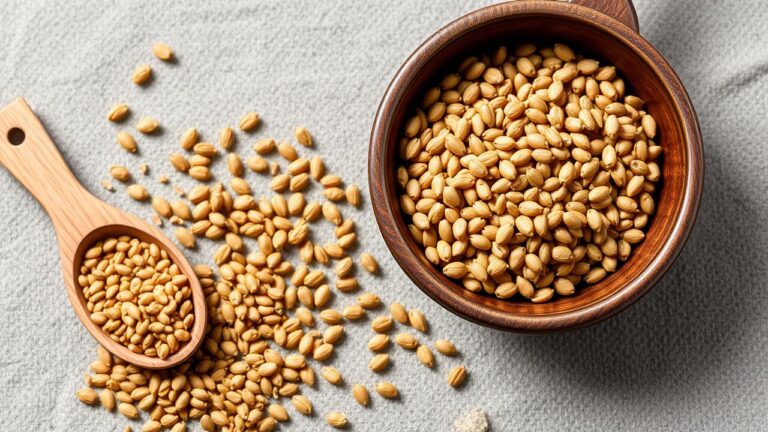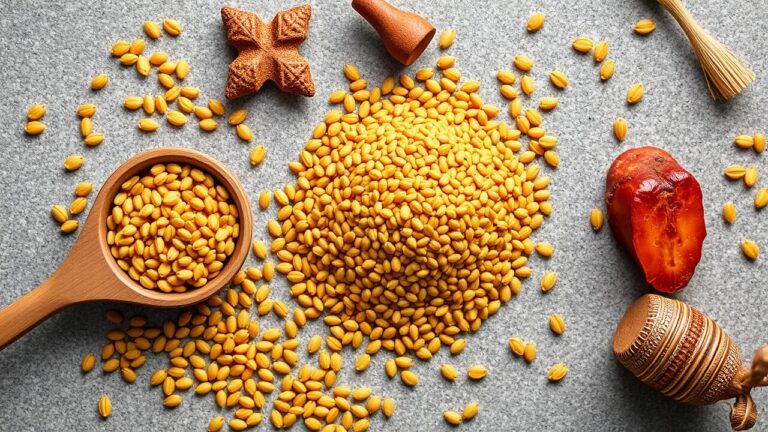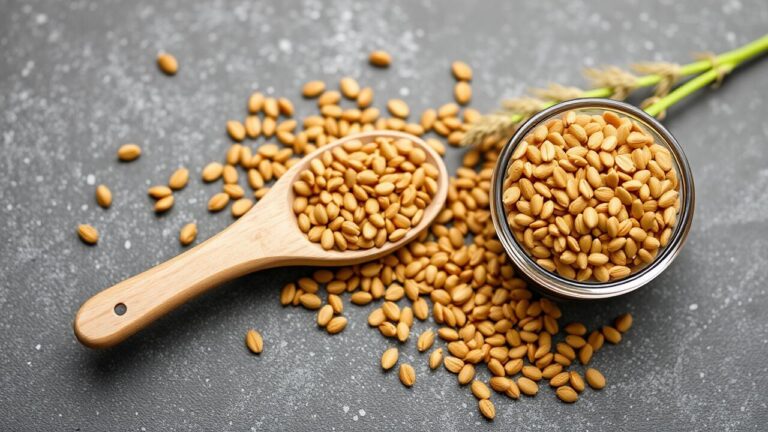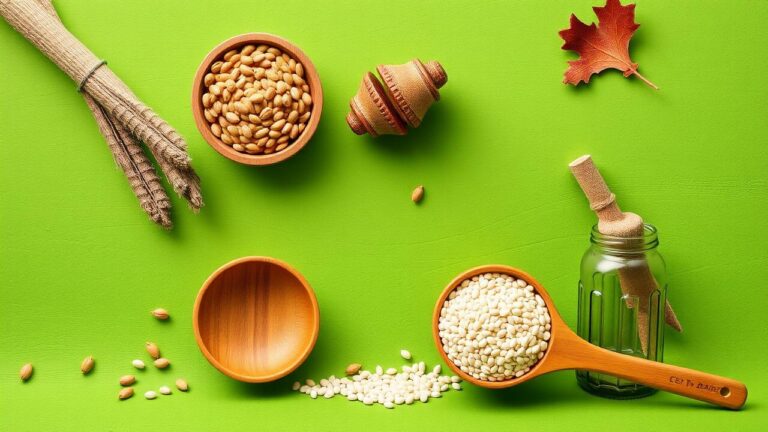Canadian Flax Farming Practices
Pest and Disease Management
Navigating the labyrinth of pest and disease management is absolutely vital for safeguarding the vitality and productivity of flax crops. Picture this: farmers embarking on regular field assessments, their eyes scanning for lurking threats. It’s a meticulous dance—monitoring for notorious pests like root maggots and aphids, while also keeping a watchful eye on telltale signs of disease such as yellowing leaves or drooping plants. The magic lies in early detection; it opens the door to swift action that can dramatically curtail damage. Enter integrated pest management strategies, where ecological balance harmonizes with crop yield—a delicate equilibrium.
With an eye toward prevention, farmers can embrace an array of cultural practices designed to thwart infestations and infections before they gain ground. Crop rotation emerges as a celebrated tactic, effectively disrupting the life cycles of both pests and pathogens alike—like pulling the rug out from under them! Meanwhile, introducing beneficial insects into the mix or opting for resistant flax varieties fortifies defenses against those common adversaries. Sure, when push comes to shove, chemical interventions might be called upon—but let’s tread carefully here! Selecting these measures demands diligence to reduce environmental fallout while nurturing our precious beneficial organisms within this intricate ecosystem tapestry.
Integrated Pest Management Strategies
Navigating the intricate world of pest management in flax farming demands a tapestry of strategies, each thread contributing to a robust defense against unwelcome invaders. Farmers often weave together biological, cultural, and chemical methods—an ensemble designed not only to curb pest populations but also to tread lightly on our precious environment. The art of regular field scouting emerges as an indispensable practice; it’s all about catching those pesky problems before they spiral out of control, paving the way for swift action when needed.
Imagine enlisting beneficial insects as your allies in this battle! These tiny warriors can help keep pest levels at bay, ensuring that crops remain below economically threatening thresholds. Meanwhile, crop rotation and intercropping burst onto the scene like dynamic dance partners—disrupting pest life cycles while simultaneously nurturing a more vibrant ecosystem for flax crops to thrive.
But wait—there’s more! Enter precision agriculture technologies: these cutting-edge tools revolutionize how we approach pest management by allowing for laser-focused applications of pesticides. This means less chemical runoff and reduced drift—a win-win situation! Even better? By embracing disease-resistant varieties of flax, farmers can dramatically cut down on pests and diseases that threaten their harvests, bolstering overall resilience.
Lastly, let’s not overlook the power of education and collaboration among growers. It fosters an environment ripe for sharing best practices—a community united in its quest for effective pest management solutions—that reinforces efforts across the board. Together, they create a resilient front against pests that threatens their fields!
Harvesting Techniques and Timing
Harvesting flax effectively is a delicate dance of timing and technique, a balancing act that can spell the difference between an abundant yield and lackluster results. Picture this: flax reaches its moment of glory when the seeds hit physiological maturity—those bolls turn a rich brown, moisture content dwindles, whispering readiness. But beware! Delay too long, and you risk a rain of shattered seeds; leap too soon, and you’ll be left with underdeveloped gems that fail to shine in quality. Typically, the harvesting season unfolds in late summer through early fall—nature’s own clock ticking according to regional whims and climate quirks—to ensure we catch flax at its peak.
Now, let’s delve into the methods swirling around this critical process! The choice pivots on production scale and available resources—a tapestry woven from different threads. For bigger operations? Enter combine harvesters with their specialized attachments—a marvel of efficiency sweeping up both seed and straw like clockwork. Meanwhile, those quaint smaller farms might cling to tradition; sickle mowers slice through fields before hands gather what remains in age-old fashion. Regardless of your chosen path through these golden fields, one truth reigns supreme: handle each plant with care during harvest time to avert seed damage and safeguard quality—this meticulous approach lays the groundwork for stellar post-harvest processing ahead!
Factors Influencing Harvest Decisions
A myriad of factors intricately weaves into the fabric of flax harvest timing, each thread impacting the final quality and yield of this delicate crop. At the forefront lies moisture content—essentially a make-or-break factor for growers, who typically target that sweet spot of around 10-12% to create ideal processing conditions. But wait! Let’s not overlook Mother Nature herself; erratic weather patterns can wreak havoc. Extended rainy spells may usher in disease or compromise seed integrity, pushing farmers into a tight corner where climatic assessments become paramount before they dare decide when to strike.
Then there’s the ripening dance of the flax plants—their maturity is yet another pivotal consideration swirling through a farmer’s mind. Snatch those seeds too early, and you’re left with paltry yields and underdeveloped grains; linger too long, though? That could spell disaster as shattering occurs and precious crops slip away like sand through fingers. Vigilantly observing seed color shifts—from vibrant blue to muted tones—serves as an essential guidepost for discerning just when it’s time to reap what has been sown.
And let us not forget that ever-shifting landscape of market demand and pricing! Producers might find themselves playing a strategic game, opting to postpone their harvest in hopes of cashing in on more lucrative market conditions down the line—a delicate balance between nature’s rhythms and economic realities that keeps them on their toes!
Post-Harvest Processing
Post-harvest processing—oh, it’s a crucial dance of preservation for those delicate flax crops! Once the harvest is complete, farmers must engage in the artful yet timely act of threshing. It’s all about skillfully separating those precious seeds from their fragile stalks, and doing so without inflicting damage on the tender flaxseed itself. But wait! The saga doesn’t end there; proper drying techniques come into play like guardians against mold invasion, ensuring that oil quality remains pristine.
Now, let’s talk moisture content—an intricate balancing act. Farmers must meticulously assess this vital aspect, striving for that sweet spot before storage to guarantee not just longevity but potency as well.
And then there are the storage conditions—ah yes! They wield considerable influence over post-harvest management. Picture this: flaxseed nestled in cool, dry environments where spoilage fears are banished and health benefits conserved like treasures hidden away. Packaging plays its own role here—a protective cloak extending shelf life while keeping oxidation at bay and preserving seed integrity.
But hold on! There’s more to consider: value-added processing options leap onto the scene! Milling seeds into flaxseed meal becomes an enticing proposition—not only does it diversify offerings but also dances towards enhanced economic returns by reaching out to wider markets. What a whirlwind of possibilities awaits after harvesting those golden gems of nature!
Techniques for Quality Preservation
Effective quality preservation in post-harvest processing hinges on the meticulous handling of flaxseed—an endeavor fraught with nuance to avert physical damage. Picture this: harvesting and transporting the seeds with equipment that’s not just functional but gentle, a delicate ballet to minimize bruising. Cleanliness becomes paramount; any contaminants lurking in the shadows threaten spoilage and degradation like unseen saboteurs. And let’s not overlook drying—the seeds must be coaxed into optimal moisture content, warding off mold growth while safeguarding that precious oil quality.
But wait! The saga doesn’t end there; storage emerges as a linchpin in maintaining flax’s integrity. Imagine containers designed not merely for containment but as fortresses against light, air, and moisture—each element an enemy to your seed’s pristine condition. Vigilance is key; regular checks for signs of infestation or spoilage serve as your frontline defense against risk. A systematic rotation of stored flax? Absolutely essential! It ensures older stock is put to use first—a clever strategy that curbs potential quality loss over time. Together, these practices weave a tapestry that extends both shelf life and marketability for coveted flax products—an art form unto itself!
| Technique | Description | Importance |
|---|---|---|
| Gentle Harvesting | Utilizing equipment designed to minimize bruising and physical damage to flaxseed during harvest. | Reduces loss of seed viability and preserves quality for processing. |
| Contaminant Control | Ensuring a clean environment and equipment to avoid contaminants that can lead to spoilage. | Maintains the integrity and extends shelf life of the seeds. |
| Moisture Management | Carefully drying seeds to achieve optimal moisture content. | Prevents mold growth and preserves oil quality within the seeds. |
| Ideal Storage Conditions | Using containers that shield seeds from light, air, and moisture. | Protects against deterioration and maintains seed quality over time. |
| Regular Inspections | Conducting routine checks for signs of infestation or spoilage. | Enables early detection of risks, allowing for timely intervention. |
Economic Considerations in Flax Farming
Flax farming bursts forth with a kaleidoscope of economic possibilities for farmers, largely owing to its remarkable adaptability as a crop. The appetite for flaxseed is on an upward trajectory, weaving its way into food products, animal feed, and even industrial applications. This growing demand nudges growers into the intricate dance of market dynamics and consumer whims. Farmers must keep their eyes peeled for global market fluctuations—those unpredictable tides can sway profitability dramatically. Crafting solid contracts with buyers becomes a lifeline, offering stability in what can often feel like a tumultuous sea of uncertainty.
But wait! There’s more to this tale: effective management of production costs emerges as the cornerstone of economically viable flax farming. Inputs—think seeds, fertilizers, pest control measures—stack up significantly in the expense ledger. Thus, farmers are urged to dive deep into yield data while harnessing precision agriculture techniques that fine-tune resource utilization like never before. And let’s not overlook the treasure trove hidden within value-added processing options; producing exquisite flaxseed oil or crafting linseed fibers could amplify profit margins and unveil fresh revenue streams just waiting to be tapped in this vibrant marketplace!
Market Trends and Profitability Analysis
Flaxseed is surging in popularity within the health-savvy crowd, and it’s not just a fleeting trend. Packed to the brim with omega-3 fatty acids and fiber, its nutritional punch has caught the eye of many. As awareness blossoms, so too does the demand for flax products—opening up fresh avenues for farmers eager to ramp up their production efforts. Market analysis paints a picture of an upward trajectory in both domestic and global arenas, showcasing flax’s remarkable versatility as an ingredient that finds its way into everything from food items to dietary supplements—and even cosmetics! The interplay of pricing dynamics reflects these evolving trends; farmers are now more focused on crafting value-added products that can fetch premium prices rather than simply boosting volume.
The profitability game in flax farming isn’t straightforward—it hinges on a web of interconnected factors like agricultural practices, input costs, and access to markets. Mastering cultivation techniques and harvesting methods can yield higher outputs alongside superior quality flax—a must-have for staying ahead in this competitive landscape. Moreover, keeping a finger on the pulse of market fluctuations allows savvy farmers to time their sales strategically when prices soar. In this ever-shifting arena marked by changing consumer tastes and advancing agricultural technology, adaptability emerges as an indispensable strategy for those looking to maximize profits in the burgeoning flax industry.
- Understanding consumer preferences for healthier alternatives is crucial for targeting potential markets effectively.
- Implementing advanced agricultural practices can significantly enhance product quality and yield.
- Keeping abreast of nutritional research can provide insights into marketing flax-based products.
- Building direct relationships with buyers can help farmers secure better prices for their products.
- Exploring innovative processing methods can create new product lines and increase profitability.
- Diversifying product offerings, such as adding flavored flaxseed oil or fortified snacks, can tap into niche markets.
- Utilization of sustainable farming practices can appeal to environmentally conscious consumers and enhance brand reputation.
Sustainability in Flax Farming
The infusion of sustainable practices into the realm of flax farming weaves a rich tapestry of environmental stewardship, intricately entwined with nature’s rhythms. Crop rotation emerges as a key player, like a maestro conducting an orchestra, enhancing soil health and curbing disease prevalence in this intricate dance. By thoughtfully alternating flax with a medley of other crops, farmers orchestrate improved nutrient cycling and diminish their reliance on synthetic fertilizers. This delightful diversification not only fortifies ecosystem resilience but also nurtures populations of beneficial insects—those tiny allies that promote harmony within the agronomic landscape.
Then comes the revolutionary embrace of no-till farming methods—a true game-changer in the quest for sustainability. Picture this: minimal soil disruption, moisture lovingly preserved like precious treasure, and carbon sequestration rising to new heights. Farmers who champion these techniques can combat erosion while sculpting healthier soil structure—an absolute cornerstone for enduring agricultural vitality. As consumers increasingly clamor for sustainably sourced products—demanding change like an impassioned crowd at a concert—flax farmers adopting these progressive strategies find themselves not just competing but thriving in the marketplace while simultaneously showering benefits upon our beleaguered ecosystem.
Practices for Environmental Stewardship and Crop Rotation
Environmental stewardship unfolds like a tapestry of practices, each thread woven in the intricate quest for ecological vitality within agricultural realms. In the world of flax farming, innovative strategies emerge—think reduced chemical inputs mingling with habitat preservation for those unsung heroes: beneficial organisms. These initiatives don’t just whisper sustainability; they shout it from the rooftops! Farmers are on a mission to boost soil health and foster biodiversity, employing techniques like cover cropping and nurturing natural vegetation along field margins. Picture this: not only do these efforts invite predatory insects to dinner (pest management’s best friends), but they also work wonders on soil structure and fertility, creating an ecosystem that thrives against adversity.
And then there’s crop rotation—a linchpin in the grand scheme of flax farming! By alternating flax with legumes or other crops, farmers throw a wrench into pest lifecycles while simultaneously curbing the threat of pesky soil-borne diseases. It’s more than just smart strategy; it’s about harmonizing nutrient demands across varied crops, resulting in an orchestra of productivity that minimizes reliance on synthetic fertilizers. This dynamic dance between crops cultivates a sustainable farming approach where each plant plays its part—sharing nutrients and engaging in ecological symbiosis—that ultimately fortifies farm resilience and paves the way for enduring viability down the line.
Conclusion
The landscape of Canadian flax farming is in a constant state of transformation, spurred on by breakthroughs in agricultural practices and an increasing focus on sustainability. Farmers are diving headfirst into integrated pest management strategies while fine-tuning harvesting techniques—each step aimed at boosting yield and quality. These cutting-edge innovations are pivotal in tackling the myriad challenges posed by pests and environmental shifts, all while keeping economic viability firmly in sight.
Looking ahead, the future of flax farming in Canada rests upon a delicate balancing act: one that weighs profitability against environmental stewardship. By adopting sustainable methods, farmers not only enhance soil health and foster biodiversity but also carve out a competitive edge in a marketplace that prizes eco-conscious products. This dual emphasis promises to secure the industry’s longevity while positively impacting Canada’s broader agricultural ecosystem—a symbiotic relationship where both nature and farmers thrive together.
